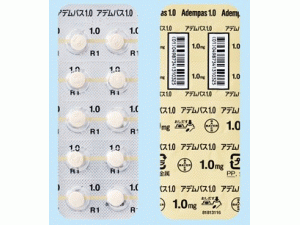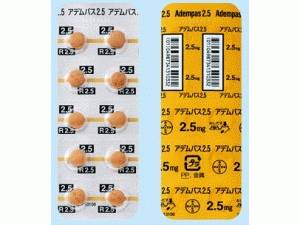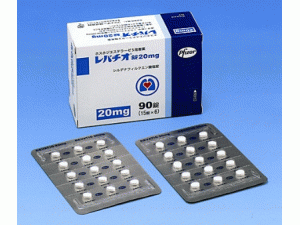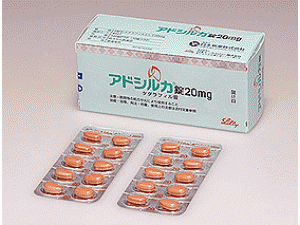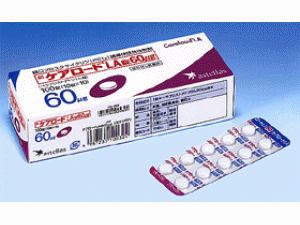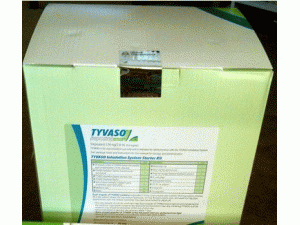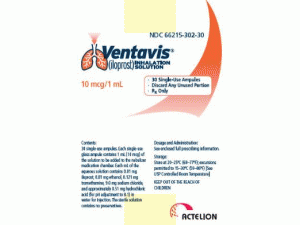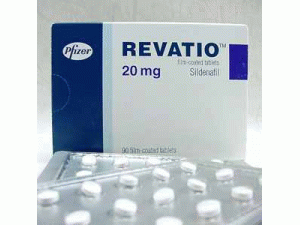苯磺酸氨氯地平(络活喜仿制药AMLODIPINE BESYLATE)说明书
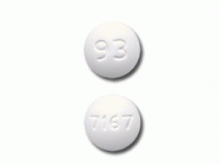 产地国家:美国
处 方 药:是
所属类别:5毫克/片 30片/盒
包装规格:5毫克/片 30片/盒
计价单位:盒
原产地英文商品名:
AMLODIPINE BESYLATE(NORVASC GENERIC) 5mg/tab 30tabs/box
原产地英文药品名:
amlodipine besylate
中文参考商品译名:
苯磺酸氨氯地平(络活喜仿制药) 5毫克/片 30片/盒
中文参考药品译名:
苯磺酸氨氯地平
产地国家:美国
处 方 药:是
所属类别:5毫克/片 30片/盒
包装规格:5毫克/片 30片/盒
计价单位:盒
原产地英文商品名:
AMLODIPINE BESYLATE(NORVASC GENERIC) 5mg/tab 30tabs/box
原产地英文药品名:
amlodipine besylate
中文参考商品译名:
苯磺酸氨氯地平(络活喜仿制药) 5毫克/片 30片/盒
中文参考药品译名:
苯磺酸氨氯地平
简介:
部份中文络活喜处方资料(仅供参考) 药品英文名 Amlodipine 药品别名 络活喜、苯磺酸氨氯地平、安洛地平、阿洛地平、二氢吡啶磺酸盐、Norvasc、Norvase、AmldipineBesylate 药物剂型 片剂:5mg。 药理作用 本品属一种二氢吡啶类钙通道阻滞药,结构与硝苯地平相似,药理学效应也相似。能优先阻滞除极细胞的钙通道,但与硝苯地平及其他二氢吡啶类钙通道阻滞药不同的是,本药在生理性pH值下呈离子化状态。pH值较低(如缺血)时,其与钙离子通道受体的结合增加,呈紧密结合。此外,有初步研究证据提示,本药可能还具有双受体结合特性。本药对外周血循环作用突出,对血管的选择性强,可舒张冠状血管和全身血管,增加冠脉血流量,降低血压,因而可降低心脏后负荷。本药在体内有较弱的负性肌力作用,对人体窦房结和房室结无影响。 缓解心绞痛的作用机制尚未完全确定,但可通过以下途径减轻心肌缺血: 1.扩张外周小动脉,使外周阻力(后负荷)降低,从而减少心肌耗能和氧需求; 2.扩张正常和缺血区的冠状动脉及冠状小动脉,增加冠脉痉挛(变异型心绞痛)患者的心肌供氧。 药动学 口服后6~12h后血药浓度达峰值,血清半衰期为35~50h,97.5%与血浆蛋白结合。本品大部分在肝脏代谢,原形药排泄<10%(其中尿中约5%),肾清除是代谢物主要排泄途径(60%),随粪便排泄20%~25%,肝功能不全的患者半衰期可长达60h。 适应症 1.高血压,可单独使用或与其他抗高血压药联合使用。 2.慢性稳定性心绞痛或血管痉挛性心绞痛,可单独使用或与其他抗心绞痛药联合使用,如硝酸酯类和(或)β-受体阻滞药。 禁忌症 1.对本药或其他钙通道阻滞药过敏。 2.严重低血压。 注意事项 1.慎用: (1)由于药物可引起血压降低,因此主动脉狭窄患者慎用; (2)充血性心力衰竭,特别是与β-受体阻滞药合用时慎用; (3)肝功能损害时药物代谢下降,半衰期延长,需慎用。 2.本药可与其他抗高血压药如噻嗪类利尿药,β-受体阻滞药或血管紧张素转换酶抑制药合用。 3.本药对β-受体阻滞药突然停药引起的撤药反跳现象没有保护作用,停用β-受体阻滞药应缓慢。 4.硝酸甘油或长效硝酸酯类与本药合用可增强抗心绞痛作用。虽无反跳现象报道,但停药时也应在医师指导下逐渐减量。 5.外科手术前无须停药,但麻醉师须了解患者的服药情况。 6.服药后如出现持续性皮肤反应,应停药。 7.药物过量及处理:过量可引起显著而持久的外周血管扩张,导致严重低血压和反射性心动过速。也可出现心动过缓、Ⅱ或Ⅲ度房室传导阻滞、心跳停搏。处理:可以采取洗胃。一旦发现过量服药应立即进行心脏、呼吸监护,频繁测量血压。如出现低血压,应抬高四肢,补液。如对上述保守治疗仍无反应,在无禁忌证情况下,可以给予血管收缩药(如去氧肾上腺素、多巴胺、去甲肾上腺素),并密切关注循环容量和尿量。静脉给予葡萄糖酸钙可能有助于逆转钙通道阻滞。如出现心动过缓,应给予阿托品、异丙肾上腺素及氯化钙,如有适应证应安置心脏起搏器。由于本药与血浆蛋白高度结合,因此血液透析不能奏效。 不良反应 有头痛、轻中度水肿、疲倦、恶心、面红、心悸和头晕。 用法用量 口服:初始每次5mg,每天1次,最大可增至每次10mg,每天1次。 药物相应作用 1.与胺碘酮联用可进一步抑制窦性心律或加重房室传导阻滞,病窦综合征以及不完全性房室传导阻滞的患者应避免两药同用。 2.与β-受体阻滞药联用可有效地治疗心绞痛或高血压,但合用二氢吡啶类钙通道阻滞药与β-受体阻滞药可能导致严重低血压或心动过缓,在左室功能下降、心律失常或主动脉狭窄的患者更明显。如需两药联用,应仔细监测心脏功能,特别是有潜在心力衰竭的患者。 3.沙奎那韦可抑制细胞色素P450 3A,可使本药代谢减少,血药浓度升高,毒性增强。 4.使用芬太尼麻醉时,钙通道阻滞药(包括本药)和β-受体阻滞药合用可导致严重低血压。 5.地拉费定是细胞色素P450 3A4的抑制药,可减少许多二氢吡啶类钙通道阻滞药的代谢。本药如与其合用,可引起血药浓度升高,毒性增强。 6.奎奴普汀/达福普汀可抑制本药经细胞色素P450 3A4介导的代谢,增强本药毒性,必要时应减少用量。 7.氟康唑、依曲康唑、酮康唑可抑制与二氢吡啶类钙通道阻滞药代谢有关的细胞色素P450 3A4同工酶系统。本药如与其合用,可使血药浓度升高,不良反应增加。 8.钙通道阻滞药可增强丁咯地尔的降血压效应,本药与丁咯地尔合用时应注意。 9.本药可增加环孢素的血药浓度,导致环孢素毒性增加(如出现肾衰竭、胆汁淤积和麻痹)。如合用应监测环孢素的血药浓度,相应调整用量。 10.与锂剂同用,可引起神经中毒,出现恶心,呕吐、腹泻、共济失调,震颤和(或)麻木,故须注意。 11.与非甾体抗炎药、口服抗凝药合用,有增加胃肠道出血的可能。非甾体类抗炎药尤其吲哚美辛还可减弱本药的降压作用,可能由于抑制前列腺素合成和(或)引起水、钠潴留。 12.萘夫西林可诱导细胞色素P4503A酶系统,降低本药疗效。 13.利福平可诱导一些钙通道阻滞药的代谢,虽然目前尚无与本药发生相互作用的报道,但如合用,本药的疗效可能会下降。 14.拟交感胺可减弱本药的降压作用。 15.与雌激素同用可增加液体潴留而增高血压。 16.麻黄含有麻黄碱和伪麻黄碱,对正常个体血压的影响不确定,可降低抗高血压药的疗效。使用本药治疗的高血压患者应避免服用含麻黄制剂。 17.磺吡酮可使本药蛋白结合增加,引起血药浓度变化。 18.本药对地高辛的肾脏清除和地高辛血药浓度无明显的影响。 19.葡萄柚汁可增加本药的血药浓度,故不宜服用。橙汁的营养成分与柚汁基本相同,而对本药的代谢无影响,可以服用。但也有研究表明,同时饮葡萄柚汁对本药的药动学并无显著影响。 专家点评 本品为长效钙拮抗剂,每天服用一次即可维持24h,稳态血药浓度,对治疗高血压和心绞痛均较适宜,其对非缺血性心肌病并发的CHF可能有效,但目前还不推荐使用。 英文说明书: NORVASC™ Pfizer Amlodipine Besylate Antihypertensive - Antianginal Action And Clinical Pharmacology: Amlodipine is a calcium ion influx inhibitor (calcium entry blocker or calcium ion antagonist). Amlodipine is a member of the dihydropyridine class of calcium antagonists. Mechanism of Action: The therapeutic effect of this group of drugs is believed to be related to their specific cellular action of selectively inhibiting transmembrane influx of calcium ions into vascular smooth muscle and cardiac muscle. The contractile processes of these tissues are dependent upon the movement of extracellular calcium ions into these cells through specific ion channels. Amlodipine inhibits calcium ion influx across cell membranes selectively, with a greater effect on vascular smooth muscle cells than on cardiac muscle cells. Serum calcium concentration is not affected by amlodipine. Within the physiologic pH range, amlodipine is an ionized compound and its kinetic interaction with the calcium channel receptor is characterized by the gradual association and dissociation with the receptor binding site. Experimental data suggest that amlodipine binds to both dihydropyridine and nondihydropyridine binding sites. Hypertension: The mechanism by which amlodipine reduces arterial blood pressure involves direct peripheral arterial vasodilation and reduction in peripheral vascular resistance. Angina: The precise mechanism by which amlodipine relieves angina has not been fully delineated. Amlodipine is a dilator of peripheral arteries and arterioles which reduces the total peripheral resistance and, therefore, reduces the workload of the heart (afterload). The unloading of the heart is thought to decrease ischemia and relieve effort angina by reducing myocardial energy oxygen consumption and oxygen requirements. Pharmacokinetics and Metabolism: After oral administration of therapeutic doses of amlodipine, absorption occurs gradually with peak plasma concentration reached between 6 and 12 hours. Absolute bioavailability has been estimated to be between 64 and 90%. The bioavailability of amlodipine is not altered by the presence of food. Amlodipine is metabolized through the cytochrome P450 system, mainly via CYP 3A4 isoenzyme. Amlodipine is extensively (about 90%) converted to inactive metabolites (via hepatic metabolism) with 10% of the parent compound and 60% of the metabolites excreted in the urine. Ex vivo studies have shown that approximately 93% of the circulating drug is bound to plasma proteins in hypertensive patients. Elimination from the plasma is biphasic with a terminal elimination half-life of about 35 to 50 hours. Steady state plasma levels of amlodipine are reached after 7 to 8 days of consecutive daily dosing. The pharmacokinetics of amlodipine are not significantly influenced by renal impairment. Plasma concentrations in the patients with moderate to severe renal failure were higher than in the normal subjects. Accumulation and mean elimination half-life in all patients were within the range of those observed in other pharmacokinetic studies with amlodipine in normal subjects. In elderly hypertensive patients (mean age 69 years) there was a decrease in clearance of amlodipine from plasma as compared to young volunteers (mean age 36 years) with a resulting increase in the area under the curve (AUC) of about 60%. Following single oral administration of 5 mg of amlodipine, patients with chronic mild-moderate hepatic insufficiency showed about 40% increase in AUC of amlodipine as compared to normal volunteers. This was presumably due to a reduction in clearance of amlodipine as the terminal elimination half-life was prolonged from 34 hours in young normal subjects to 56 hours in the elderly patients with hepatic insufficiency. Following oral administration of 10 mg amlodipine to 20 male volunteers, pharmacokinetics of amlodipine were similar when amlodipine was administered with and without grapefruit juice. Geometric mean Cmax of amlodipine was 6.2 ng/mL when the drug was administered with grapefruit juice and 5.8 ng/mL when administered with water. Mean Tmax of amlodipine was 7.6 hours with grapefruit juice and 7.9 hours with water. Geometric mean AUC0-ì was 315 ng/hr/mL with grapefruit juice and 293 ng/hr/mL with water. Geometric mean bioavailability of amlodipine was 85% when administered with grapefruit juice and 81% when administered with water. Pharmacodynamics: Hemodynamics: Following administration of recommended doses to patients with hypertension, amlodipine produces vasodilation resulting in a reduction of supine and standing blood pressures. These decreases in blood pressure are not accompanied by any significant change in heart rate or plasma catecholamine levels with chronic dosing. With chronic once daily oral administration (5 and 10 mg once daily), antihypertensive effectiveness is maintained throughout the 24 hours dose interval with minimal peak to trough differences in blood pressure reduction. Since the vasodilation induced by amlodipine is gradual in onset, acute hypotension has rarely been reported after oral administration of amlodipine. In normotensive patients with angina amlodipine has not been associated with any clinically significant reductions in blood pressure or changes in heart rate. Negative inotropic effects have not been observed when amlodipine was administered at the recommended doses to man, but has been demonstrated in animal models. Hemodynamic measurements of cardiac function at rest and during exercise (or pacing) in angina patients with normal ventricular function have generally demonstrated a small increase in cardiac index without significant influence on dP/dt or on left ventricular end diastolic pressure or volume. In hypertensive patients with normal renal function, therapeutic doses of amlodipine resulted in a decrease in renal vascular resistance and an increase in glomerular filtration rate and effective renal plasma flow without change in filtration fraction. Electrophysiologic Effects: Amlodipine does not change sinoatrial nodal function or atrioventricular conduction in intact animals, or man. In patients with chronic stable angina, i.v. administration of 10 mg of amlodipine and a further 10 mg of amlodipine after a 30 minute interval produced peripheral vasodilation and afterload reduction, but did not significantly alter A-H and H-V conduction and sinus node recovery time after pacing. Similar results were obtained in patients receiving amlodipine and concomitant beta-blockers. In clinical studies in which amlodipine was administered in combination with beta-blockers to patients with either hypertension or angina, no adverse effects on electrocardiographic parameters were observed. In clinical trials with angina patients, amlodipine as monotherapy did not alter electrocardiographic intervals. Indications And Clinical Uses: Hypertension: The treatment of mild to moderate essential hypertension. Amlodipine should normally be used in those patients in whom treatment with diuretics or beta-blockers was found ineffective or has been associated with unacceptable adverse effects. Amlodipine can be tried as an initial agent in those patients in whom the use of diuretics and/or beta-blockers is contraindicated or in patients with medical conditions in which these drugs frequently cause serious adverse effects. Combination of amlodipine with a diuretic, a beta-blocking agent or an angiotensin converting enzyme inhibitor has been found to be compatible and showed additive antihypertensive effect. Chronic Stable Angina: For the management of chronic stable angina (effort-associated angina) in patients who remain symptomatic despite adequate doses of beta-blockers and/or organic nitrates or who cannot tolerate those agents. Amlodipine may be tried in combination with beta-blockers in chronic stable angina in patients with normal ventricular function. When such concomitant therapy is introduced, care must be taken to monitor blood pressure closely since hypotension can occur from the combined effects of the drugs. Contra-Indications: Patients with hypersensitivity to the drug or other dihydropyridines and in patients with severe hypotension (less than 90 mmHg systolic). tag_WarningWarnings Manufacturers' Warnings In Clinical States: Increased Angina and/or Myocardial Infarction: Rarely, patients, particularly those with severe obstructive coronary artery disease, have developed documented increased frequency, duration and/or severity of angina or acute myocardial infarction on starting calcium channel blocker therapy or at the time of dosage increase. The mechanism of this effect has not been elucidated. Outflow Obstruction (Aortic Stenosis): Amlodipine should be used with caution in a presence of fixed left ventricular outflow obstruction (aortic stenosis). Patients with Impaired Hepatic Function: There are no adequate studies in patients with liver dysfunction and dosage recommendations have not been established. In a small number of patients with mild to moderate hepatic impairment given single dose of 5 mg, amlodipine half-life has been prolonged (see Pharmacology, Pharmacokinetics and Metabolism). Amlodipine should, therefore, be administered with caution in these patients and careful monitoring should be performed. A lower starting dose may be required (see Dosage). Beta-blocker Withdrawal: Amlodipine gives no protection against the dangers of abrupt beta-blocker withdrawal and such withdrawal should be done by the gradual reduction of the dose of beta-blocker. Precautions: Patients With Congestive Heart Failure: Although generally calcium channel blockers should only be used with caution in patients with heart failure, it has been observed that amlodipine had no overall deleterious effect on survival and cardiovascular morbidity in both short-term and long-term clinical trials in these patients. While a significant proportion of the patients in these studies had a history of ischemic heart disease, angina or hypertension, the studies were not designed to eva luate the treatment of angina or hypertension in patients with concomitant heart failure. Hypotension: Amlodipine may occasionally precipitate symptomatic hypotension. Careful monitoring of blood pressure is recommended, especially in patients with a history of cerebrovascular insufficiency, and those taking medications known to lower blood pressure. Peripheral Edema: Mild to moderate peripheral edema was the most common adverse event in the clinical trials (see Adverse Effects). The incidence of peripheral edema was dose-dependent and ranged in frequency from 3.0 to 10.8% in 5 to 10 mg dose range. Care should be taken to differentiate this peripheral edema from the effects of increasing left ventricular dysfunction. Pregnancy: Although amlodipine was not teratogenic in the rat and rabbit some dihydropyridine compounds have been found to be teratogenic in animals. In rats, amlodipine has been shown to prolong both the gestation period and the duration of labor. There is no clinical experience with amlodipine in pregnant women. Amlodipine should be used during pregnancy only if the potential benefit outweighs the potential risk to the mother and fetus. Lactation: It is not known whether amlodipine is excreted in human milk. Since amlodipine safety in newborns has not been established, amlodipine should not be given to nursing mothers. Children: The use of amlodipine is not recommended in children since safety and efficacy have not been established in that population. Geriatrics: In elderly patients (³65 years) clearance of amlodipine is decreased with a resulting increase in AUC (see Pharmacology, Pharmacokinetics and Metabolism). In clinical trials the incidence of adverse reactions in elderly patients was approximately 6% higher than that of younger population (<65 years). Adverse reactions include edema, muscle cramps and dizziness. Amlodipine should be used cautiously in elderly patients. Dosage adjustment is advisable (see Dosage). Interaction With Grapefruit Juice: Published data indicate that through inhibition of the cytochrome P450 system, grapefruit juice can increase plasma levels and augment pharmacodynamic effects of some dihydropyridine calcium channel blockers. Following oral administration of 10 mg amlodipine to 20 male volunteers, pharmacokinetics of amlodipine were similar when amlodipine was administered with and without grapefruit juice (see Pharmacology, Pharmacokinetics). Drug Interactions: As with all drugs, care should be exercised when treating patients with multiple medications. Dihydropyridine calcium channel blockers undergo biotransformation by the cytochrome P450 system, mainly via CYP 3A4 isoenzyme. Coadministration of amlodipine with other drugs which follow the same route of biotransformation may result in altered bioavailability of amlodipine or these drugs. Dosages of similarly metabolized drugs, particularly those of low therapeutic ratio, and especially in patients with renal and/or hepatic impairment, may require adjustment when starting or stopping concomitantly administered amlodipine to maintain optimum therapeutic blood levels. Drugs known to be inhibitors of the cytochrome P450 system include: azole antifungals, cimetidine, cyclosporine, erythromycin, quinidine, terfenadine, warfarin. Drugs known to be inducers of the cytochrome P450 system include: phenobarbital, phenytoin, rifampin. Drugs known to be biotransformed via P450 include: benzodiazepines, flecainide, imipramine, propafenone, theophylline. Amlodipine has a low (rate of first-pass) hepatic clearance and consequent high bioavailability, and thus, may be expected to have a low potential for clinically relevant effects associated with elevation of amlodipine plasma levels when used concomitantly with drugs that compete for or inhibit the cytochrome P450 system. Cimetidine, Warfarin, Cyclosporin, Digoxin: Pharmacokinetic interaction studies with amlodipine in healthy volunteers have indicated: cimetidine did not alter the pharmacokinetics of amlodipine; amlodipine did not change warfarin-induced prothrombin response time; amlodipine does not significantly alter the pharmacokinetics of cyclosporin; amlodipine did not change serum digoxin levels or digoxin renal clearance. Antacids: Concomitant administration of Maalox had no effect on the disposition of a single 5 mg dose of amlodipine in 24 subjects. Beta-blockers: When beta-adrenergic receptor blocking drugs are administered concomitantly with amlodipine, patients should be carefully monitored since blood pressure lowering effect of beta-blockers may be augmented by amlodipine's reduction in peripheral vascular resistance. Adverse Reactions: Amlodipine has been administered to 1 714 patients (805 hypertensive and 909 angina patients) in controlled clinical trials (vs placebo alone and with active comparative agents). Most adverse reactions reported during therapy were of mild to moderate severity. Hypertension: In the 805 hypertensive patients treated with amlodipine in controlled clinical trials, adverse effects were reported in 29.9% of patients and required discontinuation of therapy due to side effects in 1.9% of patients. The most common adverse reactions in controlled clinical trials were: edema (8.9%) and headache (8.3%). The following adverse reactions were reported with an incidence of ³0.5% in the controlled clinical trials program (n=805): Cardiovascular: edema (8.9%), palpitations (2.0%), tachycardia (0.7%), postural dizziness (0.5%). Skin and Appendages: pruritus (0.7%). Musculoskeletal: muscle cramps (0.5%). Central and Peripheral Nervous System: headache (8.3%), dizziness (3.0%), paresthesia (0.5%). Autonomic Nervous System: flushing (3.1%), increased sweating (0.9%), dry mouth (0.7%). Psychiatric: somnolence (1.4%). Gastrointestinal: nausea (2.4%), abdominal pain (1.1%), dyspepsia (0.6%), constipation (0.5%). General: fatigue (4.1%), pain (0.5%). Angina: In the controlled clinical trials in 909 angina patients treated with amlodipine, adverse effects were reported in 30.5% of patients and required discontinuation of therapy due to side effects in 0.6% of patients. The most common adverse reactions reported in controlled clinical trials were: edema (9.9%) and headache (7.8%). The following adverse reactions occurred at an incidence of ³0.5% in the controlled clinical trials program (n=909): Cardiovascular: edema (9.9%), palpitations (2.0%), postural dizziness (0.6%). Skin and Appendages: rash (1.0%), pruritus (0.8%). Musculoskeletal: muscle cramps (1.0%). Central and Peripheral Nervous System: headache (7.8%), dizziness (4.5%), paresthesia (1.0%), hypoesthesia (0.9%). Autonomic Nervous System: flushing (1.9%). Psychiatric: somnolence (1.2%), insomnia (0.9%), nervousness (0.7%). Gastrointestinal: nausea (4.2%), abdominal pain (2.2%), dyspepsia (1.4%), diarrhea (1.1%), flatulence (1.0%), constipation (0.9%). Respiratory: dyspnea (1.1%). Special Senses: vision abnormal (1.3%), tinnitus (0.6%). General: fatigue (4.8%), pain (1.0%), asthenia (1.0%). Amlodipine has been eva luated for safety in about 11 000 patients with hypertension and angina. The following events occurred in <1% but >0.1% of patients in comparative clinical trials (double-blind comparative vs placebo or active agents; n=2 615) or under conditions of open trials or marketing experience where a causal relationship is uncertain. Cardiovascular: arrhythmia (including ventricular tachycardia and atrial fibrillation), bradycardia, hypotension, peripheral ischemia, syncope, tachycardia, postural dizziness, postural hypotension. Central and Peripheral Nervous System: hypoesthesia, tremor, vertigo. Gastrointestinal: anorexia, constipation, dysphagia, vomiting, gingival hyperplasia. General: asthenia back pain, hot flushes, malaise, rigors, weight gain. Musculoskeletal: arthralgia, arthrosis, myalgia. Psychiatric: sexual dysfunction (maleand female), insomnia, nervousness, depression, abnormal dreams, anxiety, depersonalization. Respiratory: epistaxis. Skin and Appendages: pruritus rash erythematous, rash maculopapular, erythema multiforme. Special Senses: conjunctivitis, diplopia, eye pain, tinnitus. Urinary: micturition frequency, micturition disorder, nocturia. Autonomic Nervous System: dry mouth, sweating increased. Metabolic and Nutritional: thirst. Hemopoietic: purpura. hese events occurred in less than 1% in placebo controlled trials, but the incidence of these side effects was between 1 and 2% in all multiple dose studies. The following events occurred in £0.1% of patients: cardiac failure, skin discoloration, urticaria, skin dryness, Stevens-Johnson syndrome, alopecia, twitching, ataxia, hypertonia, migraine, apathy, amnesia, gastritis, pancreatitis, increased appetite, coughing, rhinitis, parosmia, taste perversion, and xerophthalmia. Isolated cases of angioedema have been reported. Angioedema may be accompanied by breathing difficulty. In postmarketing experience, jaundice and hepatic enzyme elevations (mostly consistent with cholestasis) in some cases severe enough to require hospitalization have been reported in association with use of amlodipine. Symptoms And Treatment Of Overdose: Symptoms: Overdosage can cause excessive peripheral vasodilation with marked and probably prolonged hypotension and possibly a reflex tachycardia. In humans, experience with overdosage of amlodipine is limited. When amlodipine was ingested at doses of 105 to 250 mg some patients remained normotensive with or without gastric lavage while another patient experienced hypotension (90/50 mmHg) which normalized following plasma expansion. A patient who took 70 mg of amlodipine with benzodiazepine developed shock which was refractory to treatment and died. In a 19 month old child who ingested 30 mg of amlodipine (about 2 mg/kg) there was no evidence of hypotension but tachycardia (180 bpm) was observed. Ipecac was administered 3.5 hours after ingestion and on subsequent observation (overnight) no sequelae were noted. tag_Treatment Treatment: Clinically significant hypotension due to overdosage requires active cardiovascular support including monitoring of cardiac and respiratory function, elevation of extremities, and attention to circulating fluid volume and urine output. A vasoconstrictor (such as nonrepinephrine) may be helpful in restoring vascular tone and blood pressure, provided that there is no contraindication to its use. As amlodipine is highly protein bound, hemodialysis is not likely to be of benefit. I.V. calcium gluconate may be beneficial in reversing the effects of calcium channel blockade. Clearance of amlodipine is prolonged in elderly patients and in patients with impaired liver function. Since amlodipine absorption is slow, gastric lavage may be worthwhile in some cases. Dosage And Administration: Dosage should be individualized depending on patient's tolerance and responsiveness. For both hypertension and angina, the recommended initial dose is 5 mg once daily. If necessary, dose can be increased after 1 to 2 weeks to a maximum dose of 10 mg once daily. Geriatrics or Patients with Impaired Renal Function: The recommended initial dose in patients over 65 years of age or patients with impaired renal function is 5 mg once daily. If required, increasing in the dose should be done gradually and with caution (see Precautions). Patients with Impaired Hepatic Function: Dosage requirements have not been established in patients with impaired hepatic function. When amlodipine is used in these patients, the dosage should be carefully and gradually adjusted depending on patients tolerance and response. A lower starting dose of 2.5 mg once daily should be considered (see Warnings). Availability And Storage: 5 mg: Each white, octagonal tablet, scored, debossed on one face as NRV 5 with Pfizer on the opposite face, contains: amlodipine besylate equivalent to amlodipine 5 mg. Nonmedicinal ingredients: dibasic calcium phosphate anhydrous, magnesium stearate, microcrystalline cellulose and sodium starch glycolate. White plastic (high density polyethylene) bottles of 100 and 250. 10 mg: Each white, octagonal tablet, debossed on one face as NRV 10 with Pfizer on the opposite face, contains: amlodipine besylate equivalent to amlodipine 10 mg. Nonmedicinal ingredients: dibasic calcium phosphate anhydrous, magnesium stearate, microcrystalline cellulose and sodium starch glycolate. White plastic (high density polyethylene) bottles of 100 and 250. Store at 15 to 30°C. Protect from light.用药温馨提示:当您服用此药物时,需定期接受医疗专业人士的检查,以便随时针对其药效、副作用等情况进行监测。本网站所包含的信息旨在为患者提供帮助,不能代替医学建议和治疗。
药品价格查询,专业药品查询网站,药品说明书查询,药品比价 » 苯磺酸氨氯地平(络活喜仿制药AMLODIPINE BESYLATE)说明书
药品价格查询,专业药品查询网站,药品说明书查询,药品比价 » 苯磺酸氨氯地平(络活喜仿制药AMLODIPINE BESYLATE)说明书



